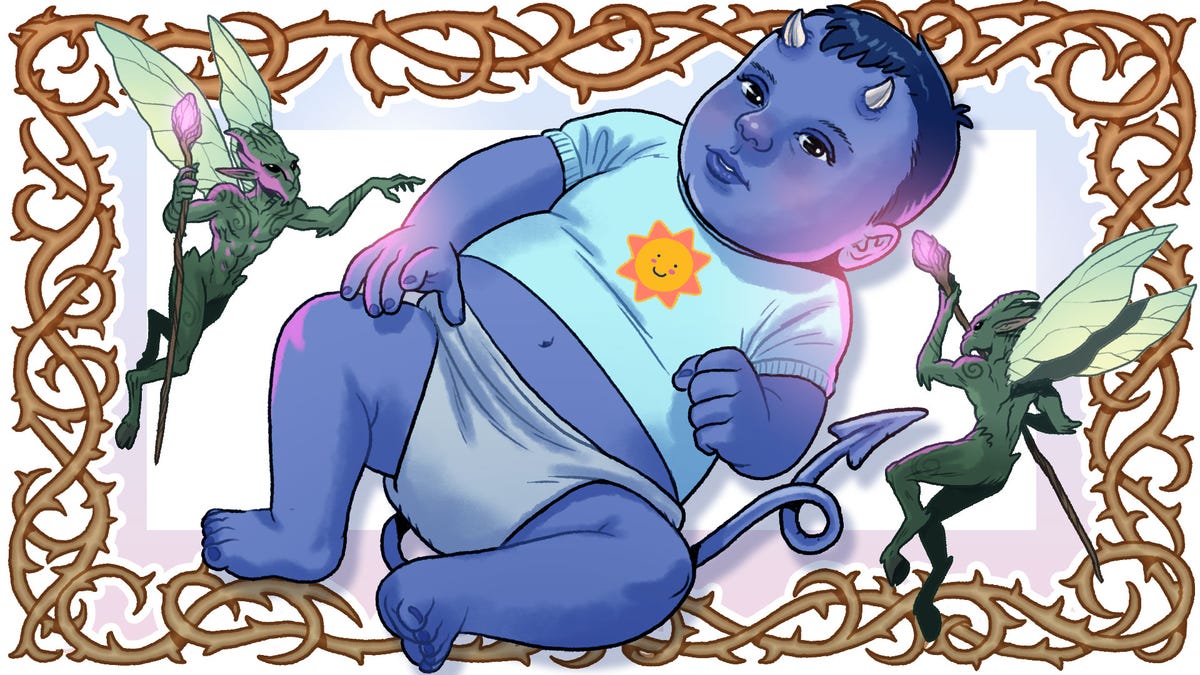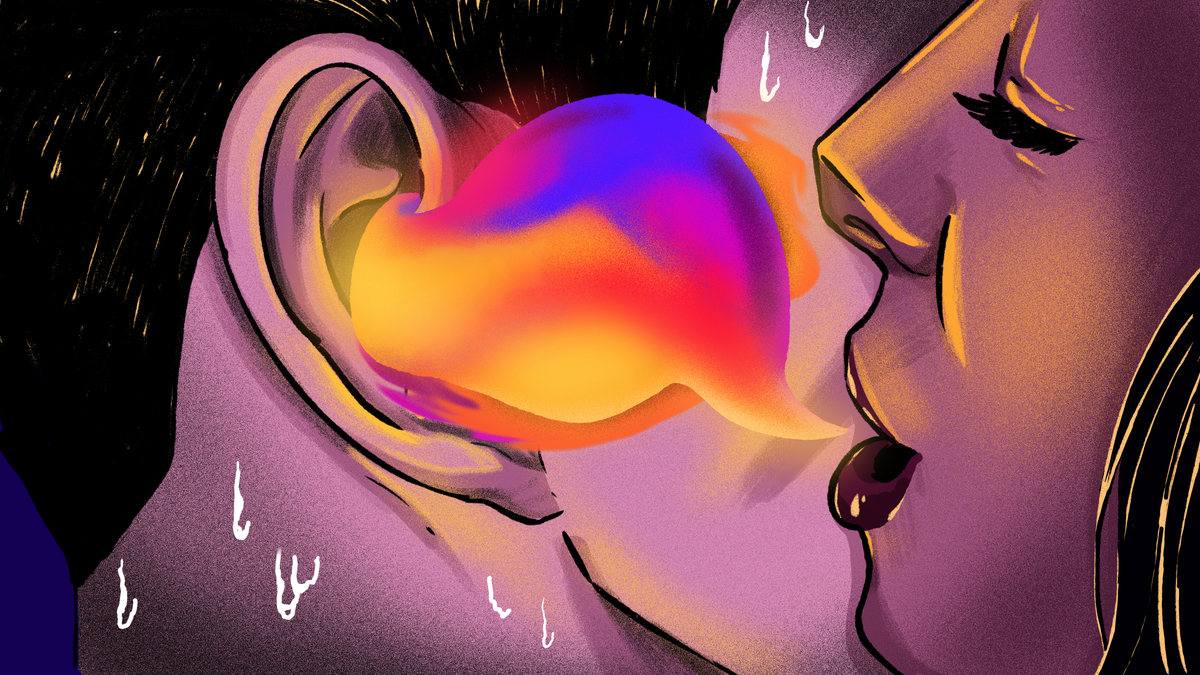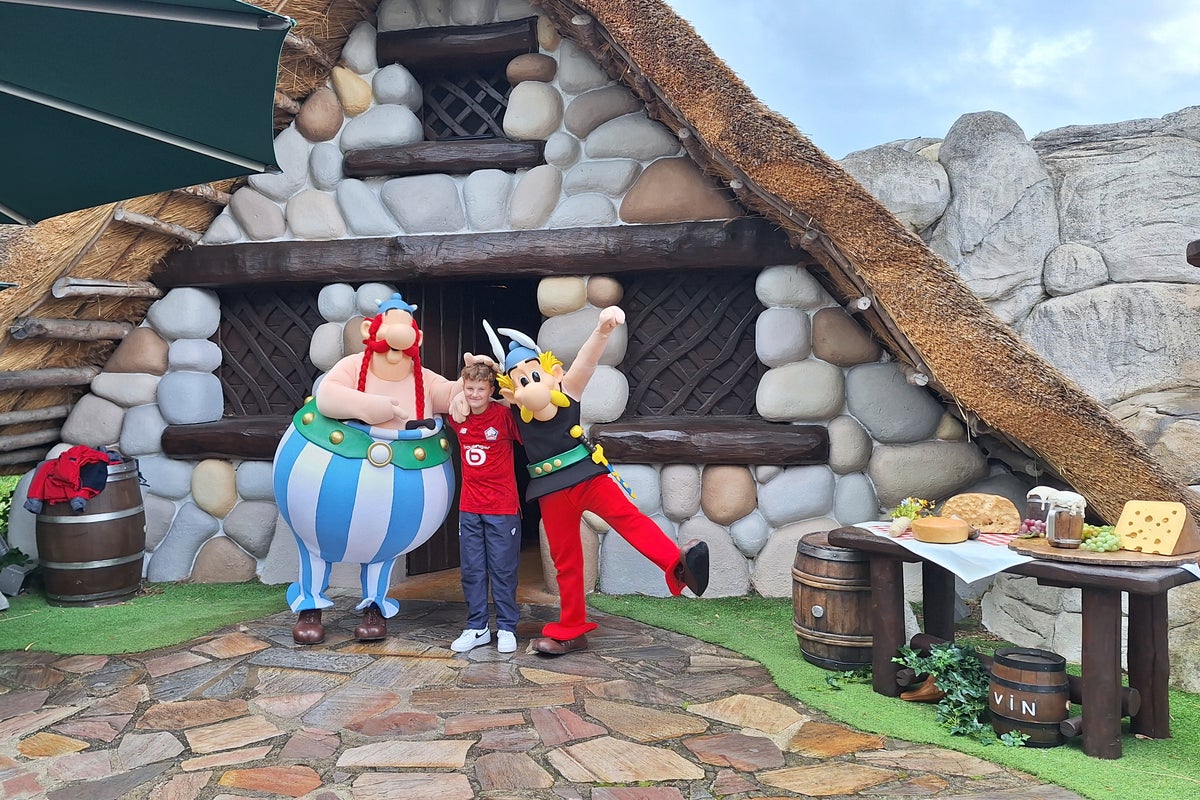Is Your Child a Changeling?
Modern parents are ill-prepared to deal with threats to their families from the fairy kingdom. Kobolds, elves, goblins, pixies, and other fey creatures have a long history of stealing human infants and replacing them with uafs (or oafs), creatures...

Modern parents are ill-prepared to deal with threats to their families from the fairy kingdom. Kobolds, elves, goblins, pixies, and other fey creatures have a long history of stealing human infants and replacing them with uafs (or oafs), creatures that look like babies, but which are actually sinister monsters with large appetites.
As a society, we are doing nothing about the changeling problem. Modernity has convinced us changelings are a “myth” or that the mere concept is “ridiculous,” but these stories were widely accepted as truth as recently as the 1900s, and for good reason: Stories of changelings offered a way for pre-scientific societies to describe very real occurrences. Moreover, accounts of a race of human-like creatures stealing babies could have a basis in historical fact. (I mean, probably not, but it’s possible.)
How to tell if your child is a changeling: The initial signs
Tales of supernatural entities targeting human babies are known all over the world, from kitsune shape-shifters of Japan to the Nigerian ogbanje, spirits who possess newborns only to die on purpose in order to spread misery. But the classic changeling—humanlike creatures that replace unbaptized babies with identical copies—are mainly a European phenomenon. Here, I’m focusing on the Welsh iterations of changelings, because when you want weird fairy crap, you go straight to the source.
Unlike the flitting do-gooders we now associate with the word “fairy,” Welsh fairies—the Tylwyth Teg—were hardcore. They loved stealing unbaptized babies, particularly the unusually attractive or well-behaved, then replacing them with a plentyn-newid or “change-child.”
If this happens to you, you won’t notice at first, but, according to Wirt Syke’s 1880 book British Goblins: Welsh Folk-Lore, Fairy Mythology, Legends and Traditions, your changeling will soon grow “ugly of face, shrivelled of form, ill-tempered, wailing, and generally frightful.” If your child begins to bite and strike and becomes “a terror to the poor mother,” it may be a changeling.
Sometimes a changeling is “idiotic,” but sometimes it will display “supernatural cunning, not only impossible in a mortal babe, but not even appertaining to the oldest heads, on other than fairy shoulders.” Changelings are also hungry all the time.
If your baby suddenly exhibiting unusual behaviors, check with your doctor, as it might not be the result of supernatural kidnapping. Many believe that calling a child a changeling was actually a pre-scientific way of describing neurodivergent children or children with developmental disabilities or other diseases. The changeling’s “symptoms,” combined with the common description of their unending hunger, paint a disturbing picture of handicapped children being abandoned or killed because sustenance farmers couldn’t afford to feed non-productive family members. The fairy part of the story may have been a way of assuaging guilt. Or maybe fairies are real.
Test whether your child is a changeling
If you doctor says, “I can find nothing medically wrong; it’s probably the work of the Tylwyth Teg,” you can confirm changeling status in a number of ways, including:
Placing the child/changeling on a shovel and holding it over a fire. (Downside: This will kill your child.)Bathing it in a solution of fox-glove. (Fox glove, or digitalis, is deadly poison, so this will also kill your child.)Whipping it with a rod. (The American Association of Pediatrics offers a host of reasons why spanking kids is just bad parenting.)Throwing it in the River Moldaw. (This is founder of Protestantism Martin Luther’s solution for smoking out a changeling, by the way.)Preparing a meal for “ten farm-servants” in an egg-shell.
All these test are designed to make the changeling reveal its true nature, and it’s hard to say which is most effective, but I’d go with the cooking in eggshells test, as it will neither maims nor kill the child in question.
Apparently cooking a meal (or just boiling water) in eggshells makes changelings instantly drop the “I’m a baby” act and exclaim, “A meal for ten, dear mother, in one egg-shell? I have seen the acorn before I saw the oak: I have seen the egg before I saw the white hen: I have never seen the like of this.” A dead giveaway, that.
So you have a changeling on your hands. What’s the next step?
Once you’ve determined that your child has been replaced with an unholy monster, you have a number of options for getting your old child back. None of them are foolproof, however—fairies are weird like that. But give the following a try. (Don’t really do any of these things, please.)
Throw it in a river. Sykes described a mother with twin changelings who first performed the eggshell test, then threw the changelings off a bridge. As soon as they hit the water, “goblins in their blue trousers came to save their dwarfs, and the mother had her own children back.” If this doesn’t work, c’est la vie. Beat it with a stick. Sometimes hearing the wails of the changeling inspire the fey-folk to save their offspring and bring yours back. Sometimes not.Leave it in the woods in the hopes the fairies will return your child. It’s hard to tell if this will work, but it’s worth a shot.Raise them as your own. There are changeling stories in which the adoptive parents show their changelings only kindness, and the fairy folk eventually return their babies. saying something like, “Since you didn’t harm our child, we haven’t harmed yours.” You should probably choose this option.What do changelings want?
It’s hard to understand the motivations of creatures from the fae kingdom. Sometimes changelings are old, nasty fairies that disguise themselves as humans basically to be assholes. Sometimes they really like human food and can’t get enough of it in the caves where they live. Sometimes the fairies put a log in the cradle when they take your child as a final “fuck you.” Fairies can be real jerks.
Sometimes fairy parents envy human society and want the best for their children, so they send them to live with unwitting hosts. Things must have been very shitty in fairyland for fairy parents to choose the life of a medieval dirt farmer for their child, but it’s this motivation that suggests how changelings might have been real.
Could changelings have actually existed?
In the animal kingdom, changelings are very real: Brood parasites are a class of animals that rely on other species to raise their young—spotted cuckoos, for instance, lay their eggs in magpie nests, and there are fish and insects that employ similar survival strategies.
Among humans, however, the evidence for the existence of changelings is sparse. There was a fairly popular theory in the 1800s that fairy tales are based on stories of an actual, diminutive race of prehistoric humans who lived in Europe until they were driven into caves by the invasion of their lands. As the theory goes, these proto-humans would sometimes secretly substitute their children for those of surface-dwellers, just so their offspring could have a better life.
There isn’t much evidence to support the specifics (apart from some dubious 19th century fringe archeology) but as theories go, it’s at least possible, if not plausible. Other species of humans lived alongside modern humans in Europe as recently as 40,000 years ago, so it’s not inconceivable that the last of them were driven underground. It’s not impossible that they’re still there either, hiding under bridges on the Faroe Islands or under toadstools in the Irish countryside, waiting for an attractive baby like yours to steal.

 Fransebas
Fransebas 































